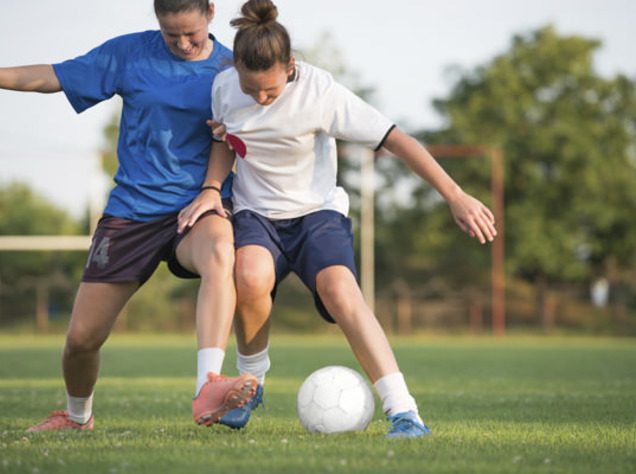Keep Possession By Shielding The Ball
The quickest way to build confidence is by acquiring the skills of ball possession, undoubtedly. The more you have control of the ball and its movements, the better. Then, translating that success into shielding it from defenders is a vital basic skill to possess. The term shielding means using your body to prevent a defender from taking the ball. It may seem one-dimensional, but shielding can be used in many ways. All the best players have not only mastered shielding, but have found it advantageous to add it to their arsenal for any situation, offensive or defensively.
Shielding isn’t easy at first, but with focus and effort, any player can become a monster on the pitch. The most beautiful part about shielding is that it doesn’t require a huge player to be effective. In fact, some of the best shielding players are, by soccer standards, tiny. It just takes a willing player in tune with their body in order to effectively shield.
The Four Facets Of Shielding
- Get In An Athletic Position: Bend your knees, lower your butt towards the ground, and stand firmly. The key to shielding is good balance, which a good stance helps with greatly.
- Arms Out For Balance: As long as you are not extending your arm to push the defender, you can use both arms to maintain good balance.
- Body Against Body: When shielding, don’t wait for your opponent to push into you, thus making you lose balance. Stand firm and push against them aggressively. A strong upper body helps with this — and you achieve it with proper strength and conditioning fitness. If you feel like you’re losing your balance or the defender is overpowering you, dribble away or pass into open space.
- Keep Your Head Up: As you’re shielding the defender off the ball, keep your head up and look around for an opportunity to make a good choice with your next move. Most of the time you will pass from a shielding position, but there are times when you can break free of your defender and execute a move that allows you space to dribble, shot, or further the offensive possession.
Game Time Scenarios
With good technical practice, you will not have to think too much about shielding — it will just become a natural part of your game. But knowing how to shield the ball often doesn’t matter if you’re not situationally prepared for when to use them.
Imagine that you’ve just cut to the outside of a defender. The defender gets beat enough that they cannot get possession of the ball, but they stay with you. You’ll naturally see that you can do nothing in this situation but pull the ball back. Once you pull the ball back, you’ll start shielding the ball. You may pass the ball off or do some stop-and-go moves that could allow you to beat that player from your sideways position.
At other times, you’ll have absolutely no passing options and no space to dribble. At this point, you will naturally shield the ball while you look for any option. Similarly, where you’re stuck in a small area like the corner flag, you can’t do much more than shield. When shielding in these situations, players usually try to kick the ball between the defender’s legs, kick it off a player, or force the defender to kick the ball out. Or, if an offensive player has shielded the ball in the corner with a lead in the final moments of the game, he’ll often be content to shield off defenders with no intentions of attacking. It can be frustrating to see your last seconds tick off the clock thanks to a talented, experienced shielder.
(Related: Read about Spain’s Tiki-Take style here.)
Huddle Up
It isn’t a glamorous job, but it is extremely crucial in terms of keeping possession and ultimately translating that into winning games. Remember, it isn’t just defenders that need to do this dirty, painful work – everybody needs to do their part as well. Without midfielders holding the ball effectively, the defenders will be constantly attacked.
Efficiently shielding will greatly improve your game and the squad’s chances of winning. You’ll gain confidence and possess the ball more often — therefore, even in the tiniest sense, increasing your team’s chances of scoring. All you need to practice is a ball, a partner, and a little open space. As always with any technical skills practice, use both sides of your body. Be the player that your coach knows he can trust in any situation versus any type of team!
How useful was this post?
Click on a star to rate it!
Average rating 3.7 / 5. Vote count: 3
No votes so far! Be the first to rate this post.



